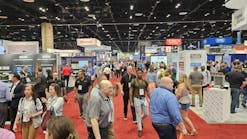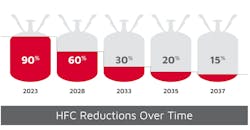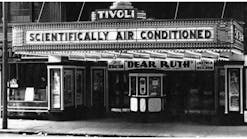Lunching and Learning
I wanted to pass on my compliments on the article by Jeffrey Newcomb (“Lunching and Learning: Food for Thought on a Hospital Chilled-Water System,” July 2017). I can’t remember when I enjoyed reading a technical article as much as this one. As a registered mechanical engineer for 34 years, I find one of my challenges in my day-to-day activities is passing on the knowledge to the young engineers coming up to take on the challenges of today and the future.
Put in a narrative that was both interesting from a human-nature perspective and provided excellent insights into chilled-water-system issues was a great way to create a format for both learning and remembering. It exemplified the step-by-step questioning and solution development that is the heart of good engineering.
Well done.
David S. Pearson, P.E., Pearson Engineering Associates Inc., Phoenix, Ariz.
I just got done reading “Lunching and Learning: Food for Thought on a Hospital Chilled-Water System.”
It is a great article that covers a lot of ground. Some people may have different ideas about the problems, but that’s what causes the good discussions.
The conversational presentation method is a great way to talk about the issues covered.
Shame that the use of CAD to design these kinds of systems leaves the younger engineers without the background to look at the CAD results and know that sometimes there are problems in the design that will not be noticed until the systems are installed. The reference to log mean temperature difference is great.
Very often, it’s the off-design points that cause most of the problems.
Again, a great article and great presentation. My hat is off to Mr. Newcomb.
Please continue using this method in the future. It will help the younger engineers, if they take time to read it.
Rick Coleman, P.E.
I found the story both informative and a joy to read.
Jim Hartman Aiken, S.C.
I’m a bit confused as to how you determine a flow rate of 1,230 gpm, if the chiller tonnage matches that of the cooling tower (the delta-T is 13° F). I arrive at 1,250 gpm (which is somewhat funny because, later in the article, the older gentleman inquiries about this very value).
Douglas Jones, P.E., Mount Sinai
Author’s response:
At the point in the article where the 1,230 gpm comes up, Sam was asking about how much water a chiller that can cool 1,000 gpm from 58° F to 42° F, if the return-water temperature was 55° F instead of the 58° F design value. The capacity of the chiller is assumed to remain the same for this example.
The chiller capacity at design conditions is: 1,000 × 500 × (58−42), which is 8,000,000 Btuh, or 667 tons. The question is, how much could the flow increase when the return water is coming back at 55° F at the same tonnage? For that, we rearrange and recalculate: 8,000,000 ÷ (500 × [55 − 42]), which gives us the 1,230 gpm. Old Sam would make it an easier calculation and take (16 ÷ 13) × 1,000 to get the same answer.
The 1,250 old Sam refers to later is just a little quiz. Because one chiller can handle only the load of 1,230 gpm coming back at 55° F, a load from the building of 1,250 gpm at 55° F means you are beyond the capacity of one chiller, and another chiller would need to be started.
I wish I had picked a little bigger number than 1,250 for the article. In the real world, a chiller might actually be able to handle the extra gpm because of the reduced lift on the compressor (13° F delta-T vs. 16° F delta-T) or because the chiller might have been selected with some extra capacity. The good news is that the control scheme in the article will take this into account and get all it can out of the operating chiller before another one is started.
Be careful about chiller tons and cooling-tower tons. A ton is always 12,000 Btuh, but a 500-ton cooling tower cannot handle all the heat a 500-ton chiller puts out. The heat put into the condenser water also includes heat from the compressor, so that increases the size of the tower needed, depending on the efficiency of the chiller.
My other articles are “Lunching and Learning: Food for Thought on a Geothermal-Heat-Pump-System Design” and “Lunching and Learning: A Civil Engineer’s View of a Campus Chilled-Water System." Of these two, the campus chilled-water system probably is more pertinent to a large hospital system.
I did not put everything I could have into this article. At one point, Sam asks if the hospital runs year-round chilled water and the answer is yes but that MRIs and CTs had DX systems. There could have been more discussion there about efficiency (free cooling in the winter) and reliability (redundancy in a chilled-water system vs. one DX system).
If you do not have year-round chilled water, that is something to look into, not only for reliability but for efficiency. The efficiency is more than just how much energy it takes to make the chilled water, but also the extra energy needed to humidify air brought in through an air-side economizer in a humidified building.
Jeffrey Newcomb, P.E., MBA, LEED AP









